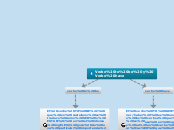Verbo to be y Verbo have
verbo to be
El verbo TO BE, que en castellano se traduce como SER o ESTAR, en el idioma inglés goza de una particular importancia. Su significado depende del sentido de la oración.
Presente del indicativo:
Modo afirmativo: I am-Soy/Estoy,You are-Eres/Estas,He are-El es/esta,She are-Ella es/esta,It are,El/Ella es/esta(p/animales u objetos,We are-Nosotros somos/estamos,You are-ustedes son/están,They are-Ellos son/están.
Ejemplos: We are excited/Estamos emocionados. I am beautiful/Soy Hermosa.
Modo negativo: I am not-No soy/No estoy,You are not-No eres/no estas,He are not-No es/no esta,She ar not-No es/no esta,It are not-No es/no esta,We are not-No somos/no estamos,You are not-No son/no están,They are not-No son/no están.
Ejemplos: They aren't friends/Ellos no son amigos. They aren't brothers/Ellos no son hermanos.
Modo interrogativo: Am i?/¿Soy yo? ¿Estoy yo?,Are you?/ ¿Eres tu? ¿Estas tu?,Is he?/ ¿Es el? ¿Esta el?,Is she?/¿Es ella? ¿Esta ella?,Are we? ¿Somos Nosotros? ¿Estamos nosotros?,Are they? ¿Son ellos? ¿Estan ellos?
Ejemplos: Are we lost?/¿Estamos perdidos? am i nice?/¿Soy agradable?
verbo have
El verbo TO HAVE(tener/haber) es uno de los verbos que mas se usa en ingles y es un verbo irregular,así que es importante saber como se conjuga y cuando se usa bien.
Usos comunes de to have
